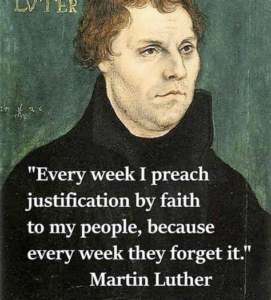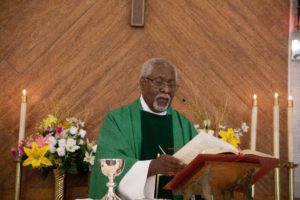Preaching the Prognosis
Co-missioners,
Early in the Easter season we brought you an essay on preaching by Steve Hitchcock. Turns out that Steve had more to say. Here’s his second installment, as helpful for Gospel-minded preachers as the first one was.
We should mention that both these essays will be discussed at the next session of Table Talk. It’s set for July 27 at 2 p.m. Eastern time, 1 p.m. Central. Table Talk is a monthly Zoom conversation about significant items in our Crossings library. To join the discussion, drop a note to Cathy Lessmann.
Peace and Joy,
The Crossings Community
Preaching the Prognosis:
Keeping the Gospel in Good Works
by Steve Hitchcock

In an earlier essay, “Why is the Gospel Not Preached?”, I suggested that the problem is “a P6 dilemma.” P6 is the last of the six steps in the diagnosis-prognosis methodology that Crossings uses and encourages. Here we think about how faith in the Gospel spills into action. And here is where preachers commonly stumble. Listeners do too. Trusting the Gospel confers radical forgiveness and freedom. In Christ, we are a new creation. A new person, not a better person. For those listening, that prognosis is, at best, a perplexing and confusing message. At worst, the offer of freedom can be frightening—a blank slate, and no chalk to write on it with.
One response to my essay was: “Good diagnosis, Steve. What’s your prognosis?” How do we preach a prognosis that doesn’t have soft strings, that doesn’t instill a new legalism?
My response to that challenge begins by acknowledging that two realities have shaped my views on preaching.
Serendipitously, I’ve had a lifetime of immersion in the lectionary readings. As a teenager, when there was only one lectionary year, I was “hired” to type up the three lessons for the entire church year. In my 20s, for several years, I had to come up with two or three sentences that captured the intent of the three readings for Sunday. In my recent years working for Bread for the World, Lenten Prayers for Hungry People and Bread for the World Sunday gave an excuse to spend time with the Gospel texts.
As a lay person, I’ve been fortunate to have opportunities to preach—often on the Sundays of Clergy Exhaustion, the Sundays following Christmas and Easter, as well as during summer vacations. At several points, I did have two or three month stretches where I was preaching every Sunday. But I’ve never had the sustained obligation to preach Sunday after Sunday. And my preaching never been a yardstick by which my career has been judged—and perhaps my salary affected.
 When I do preach, the challenge is to offer a prognosis—P6 or Step Six in the Crossings six-step method—that doesn’t become a third use of the law: “suggestions” that turn into legalistic requirements. It’s too easy for those descriptions of our new, radically free life in Christ to heard as “soft strings” added to the Gospel. Or, put another way, it’s not easy to make sense of Melanchthon’s proposal in Apology 4: that justification by faith in Jesus Christ results in more good works, not fewer.
When I do preach, the challenge is to offer a prognosis—P6 or Step Six in the Crossings six-step method—that doesn’t become a third use of the law: “suggestions” that turn into legalistic requirements. It’s too easy for those descriptions of our new, radically free life in Christ to heard as “soft strings” added to the Gospel. Or, put another way, it’s not easy to make sense of Melanchthon’s proposal in Apology 4: that justification by faith in Jesus Christ results in more good works, not fewer.
For me, the best antidote to Gospel-killing preaching has been the study and preparation leading up to the spoken sermon.
I. How immersion in the appointed Gospel makes full use of the benefits of Christ’s death and resurrection
My proposition is that, if you spend enough time exploring the Gospel reading for an appointed Sunday, you will discover rich and surprising images, metaphors, and “ah-ha’s” about how Christ’s death and resurrection offers consolation and comfort.
Here are some questions that have fed this discovery process:
- Where does the lectionary text fit in the overall structure of the Gospel? What is its function at this point? (I’ve never been disappointed when I’ve taken the time to re-read the entire Gospel.)
- What would the first readers or hearers of this text understand from this passage? What good news would they have heard?
- Why do we hear a different message today? What is different about our situation? Are there still some connections between us and the first listeners?
- Are there individual words in the English translation of the text that mislead or misdirect us?
- How does this text interpret us today? What predicament, malady, or crisis does this text suggest?
- How is this text leading the listeners to remember Christ’s death and resurrection? What are the allusions? What are the signposts?

Photo by Dawn McDonald on Unsplash
The narrative structure of all four Gospels is a journey—filled with increasing conflict—from Galilee to Jerusalem. In this journey, Jesus is not an example of what we should do. As disciples, we do follow Jesus—not his example, but rather to keep close to him all the way to the cross. The crucifixion is the “conflict resolution” in the story, and the resurrection is the denouement. Denouement, but not the end of the story, but an invitation to be part of the story that continues to be lived out whenever the Gospel is proclaimed.
To a lesser and greater degree, in each of the four Gospels, we are positioned as insiders to the stories being told. In John’s Gospel, for example, we are invited to listen in on Jesus’ conversations with the Father. As preachers, we help our listeners hear those promise-filled conversations.
II. What happens when we trust the Promise of new life and radical freedom? How do we picture or describe our new reality (Prognosis, Step 6)?
- Preaching is the means by which the Spirit creates new beings with new hearts (and brains). Not better people, but new people. Doesn’t it make sense then for the preacher to express the joy, hope, and thanksgiving of our new reality?
- Perhaps, too, our preaching should encourage listeners to relax…do nothing…keep our (editorial) mouths shut. Simply bask in the joy of the Christ life.
- The preaching of the Gospel inspires a sense of abundance and of gratitude. There is the grace of starting over, of having a blank slate, an empty canvas. In this new place that we find ourselves, it seems natural that we sing joyous hymns and that we pray in confidence.
- If we are a gathering of new beings, then the preacher can point to what those new beings are already doing as evidence of the new life we have in Christ.
- We make lots of mistakes, offend others, overlook what should be obvious—we’re still in a world filled with evil and collapsing into death.
- We acknowledge and affirm the new sensitivity we feel about the needs of our neighbors, and we aren’t discouraged by how flawed and feeble our efforts are as we seek to care for those in need.
- The joy of our new life takes place in the midst of suffering…persecution…doubt. Can’t our prognosis be that the Spirit of the Risen Christ inspires endurance and perseverance?
- Trusting the Promise of new life—along with all the singing and praying that ensues—does create koinonia—a sense of connectedness, community, and consolation.
- Finally, do we dare commend spiritual practices or disciplines that don’t become “got to’s”? Are there practical steps our listeners can take to facilitate their hearing the Gospel every day?
III. How can our P6 descriptions—our prognosis for those who are buried with Christ and raised to new life—avoid excluding those who are different from us?
If we’ve immersed ourselves in the Gospel text for a particular Sunday—and discovered its signposts to Christ’s death and resurrection—we will end up telling stories, creating metaphors, provoking parables.
 I’ll take a risk and contend that our stories, metaphors, and parables should have the following characteristics: bipartisan, family-focused, work-related, tied to daily life, neighborhood-situated, and boundary crossing.
I’ll take a risk and contend that our stories, metaphors, and parables should have the following characteristics: bipartisan, family-focused, work-related, tied to daily life, neighborhood-situated, and boundary crossing.
Personal stories can invite listeners to imagine their own stories, but the preacher’s own story can also overwhelm the main point (only one main point per sermon!). The danger is that our personal story betrays ideological or cultural biases that can separate us from those who don’t share our views or lifestyle. A better approach would be to tell stories about other people whose lives are being transformed the Gospel. Or we can frame our story in the third person.
Walter Bouman was the one, I believe, who suggested the proclamation of the Gospel had to be “intelligibly disjunctive.” We are calling for the death of the old self, the collapse of the old order, the breaking of the reigning idolatry. Yet the words we use need to be understandable to those who hear this disjunctive message. Especially in today’s culture, the need for intelligibility also implies the Churchillian style of short words, short sentences, active verbs, and simple syntax.
All of this—reading, studying, thinking, and writing—is time-consuming work. Perhaps the preacher’s job is “cursed” with some left-hand kingdom burdens. Still, the joy of discovery and the literary richness unearthed are surely animated by the Spirit’s breathing and out. For those who benefit from hearing such sermons, the green shoots of faith will surely break through.